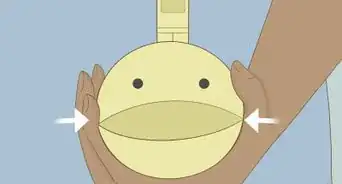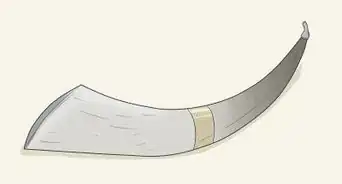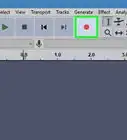X
This article was co-authored by wikiHow Staff. Our trained team of editors and researchers validate articles for accuracy and comprehensiveness. wikiHow's Content Management Team carefully monitors the work from our editorial staff to ensure that each article is backed by trusted research and meets our high quality standards.
There are 22 references cited in this article, which can be found at the bottom of the page.
This article has been viewed 142,626 times.
Learn more...
The French horn is one of the most difficult of the standard orchestral wind instruments to play. Mastery happens through dedicated practice and perseverance. The reward of playing this versatile instrument is indescribable.
Steps
Part 1
Part 1 of 4:
Mastering the Basics
-
1Learn the proper way to hold the horn. As with any instrument, there is a proper way to hold your French horn in order to get the best sound possible. Place the index, middle, and ring fingers on the three keys. If you have a double horn, place your thumb on the trigger key, then wrap your pinky around the ring below the third key. Next, you want to work on your right hand positioning.[1]
- Sit up in a chair with your back straight so that you can breathe into the horn without obstruction. You usually want to sit on the edge of the chair to prevent slouching.
- Hold the horn at a 45-degree angle with the mouthpiece toward your face. Cup your hand and place your left thumb on the thumb key. Put your left index, middle, and ring fingers on the three keys on top. Your left pinkie should be through the pinkie ring, and your right hand inside the bell.
- Now that your fingers are in place, bring the horn up so that the mouthpiece is against your lips.[2]
-
2Form an embouchure with your lips. To blow into the mouthpiece, you have to first learn how to purse your lips. This is called, “embouchure.”
- Practice saying, “mmmm” with your mouth, slowly adding pressure between your lips. Your lips should form a frown. However, make sure to keep your face relatively relaxed, as tensing your face too much can cause you to tire more easily.
- The corners of your mouth should stay in place, almost as if you’re puckering your lips.[3]
- It’s a good idea to practice in front of a mirror to make sure you’re getting your form right.[4]
Advertisement -
3Blow into the horn. Without pressing any of the valves, you can use the embouchure technique to blow into the mouthpiece of the horn.
- You want to blow into the horn using fast, quick blows that come from your diaphragm, not your chest. Try to take in deep breaths before blowing.[5]
- Make sure you’re not pressing your mouth into the mouthpiece too hard. If your teeth hurt or a ring appears on your lips, you’re pressing too hard. You want a relaxed tension against the mouthpiece when you blow into it.[6]
- If there isn't any sound coming out, make sure you're putting enough air through the horn.
-
4Memorize the keys. It will make your life a lot easier to learn exactly where the keys are so that your fingers know where to go when you’re playing.
-
5Learn how to control volume. The volume of the notes you play will depend on how much air you blow into the horn. The more air you blow, the louder the note will sound (and vice versa). Techniques that can help with controlling the amount of air you use is by thinking about keeping your teeth about a pinkie's width apart from each other.[9]
Advertisement
Part 2
Part 2 of 4:
Learning to Read Music
-
1Learn how to read sheet music. To be a good French horn player, you’ll want to learn how to Read Music.
- Sheet music is the basis of many musical performances. You can also learn by ear, but most songs are played from sheet music.
- Learning sheet music gives you a deeper understanding of how your instrument works, as well as music theory.[10]
-
2Learn the notes you’re playing. The most basic thing you’ll learn first is the order of the notes and how they’re placed on a music staff. Secondary to this is knowing how each of the notes feels on your face and to the amount of air you're using, not necessarily what they sound like.[11]
- Many parts go into the relationship between notes and the staff. That's why this piece is so fundamental.
-
3Understand the clefs. Once you’ve memorized the notes, the next step is to understand how the clefs work.[12]
- There are two main clefs that can show up on a music staff. The treble clef notates the higher pitches of music, and the bass clef notates the lower pitches.
-
4Recognize the tempo. Sheet music notates how fast or slow a song is by the tempo. It’s usually notated at the top of the sheet using a BPM (beats per minute) measurement.[13]
-
5Play a simple melody. Once you have a pretty good understanding of the basics of sheet music, try playing a simple melody. Pick something that only has a few notes and practice until you’ve mastered it.
-
6Play more complex melodies. Eventually, you can practice playing more complex melodies. This will help you play your instrument better and help you become better at reading sheet music.
- Pick music that has a variety of note structures, clefs, and tempos.
Advertisement
Part 3
Part 3 of 4:
Becoming a Better Player
-
1Play standing up. Now that you can hold your instrument and play sitting down, it’s time to play standing up. A French horn weighs about 4 pounds. There won’t be many times when you’ll need to play standing up, but recitals are a common one.[14]
- Since your right hand is in the bell anyway, just slide it up to the top of the bell so that it’s resting on your hand. All your other hand placements stay the same.
- You can buy small modification pieces that help hold up the horn easier.
-
2Learn advanced techniques. Once you’ve mastered the basics you’re ready to learn more advanced playing techniques. It can be helpful to recruit a tutor or advanced player for these skills.
- Muting (or stopping) the horn creates a high-pitched sound from the bell. You can stop the horn by moving your hand further into the bell until it’s in all the way. Twist it until little or no air can get out.[15]
- Slurring notes are playing two notes without stopping or releasing between. To do this you’ll continue to change the notes on your keys but your airflow remains constant and steady.[16]
- Playing glissando is starting and ending on specific notes while playing as many notes between as you can.[17]
-
3Get lessons. Lessons are a great way to learn advanced skills and get feedback on your progress. You can hire private tutors or join group classes. Some classes will play at events, giving you an opportunity to show off your new chops.
-
4Watch tutorial videos. You can find a lot of useful tutorial videos online. Some of them will teach you to play using sheet music, and some will teach you to play by ear. If you search, you should find what you’re looking for.
-
5Practice, practice, practice. The most effective way to become a better horn player is to practice. Make time to play your horn on a regular basis. Create challenges for yourself by upping the ante on songs you play.
- You can get books of sheet music that have a variety of songs with different levels of difficulty.
- Tutor books sometimes include training schedules, often with lessons on reading sheet music.[18]
-
6Ask questions. Don’t be afraid to ask questions when you get stuck or aren’t sure how to do something. There are lots of places you can go to get your questions answered.
- You can consult tutors, French horn websites, video comment threads, and forums.
Advertisement
Part 4
Part 4 of 4:
Caring for Your French Horn
-
1Store your horn in a sturdy case. When you’re not playing your horn, store it in a padded case. Most cases have a hard shell to protect it from damage.
-
2Clean the instrument after you play it. Each time you play your horn you should clean it. This will prolong the life of the instrument.
-
3Conduct maintenance once a week or so. Every week or two you’ll want to conduct routine maintenance on your instrument to make sure it stays in good condition for as long as possible.
- Clean the mouthpiece with dish soap and water. It might also be helpful to use a mouthpiece brush, which you can find at most music stores.[21]
- Oil the rotors and valves. Remove the valve caps and apply key oil or rotor oil to the pivot points and bearing shaft.[22] You’ll know the keys need to be oiled if they stick.[23]
- Apply slide grease to the tuning slides. Remove them, put the grease on them, and replace them.[24]
-
4Clean your instrument thoroughly every few months. Every once in a while, you should do a full cleanse on your horn. That means flushing out the entire instrument with soap and water. Use a brush to clean the tuning slides.[25]
-
5Repair any broken pieces. If anything on your horn breaks, take it to a shop and get it repaired. It’s a delicate piece of machinery that won’t work if some of the parts are defective.
Advertisement
Community Q&A
-
QuestionHow do I teach someone else to play French horn?
 Community AnswerGenerally, you can teach them the way that you learned. Since there are two different base-scales, it would be best to find which one the other person is best at. Get a book. I started with the Standard of Excellence.
Community AnswerGenerally, you can teach them the way that you learned. Since there are two different base-scales, it would be best to find which one the other person is best at. Get a book. I started with the Standard of Excellence. -
QuestionIs there a difference in the fingering chart for key C between the US and England?
 Community AnswerThere should not be a fingering chart difference for different countries because instruments will function the same way, regardless of where they're being played.
Community AnswerThere should not be a fingering chart difference for different countries because instruments will function the same way, regardless of where they're being played. -
QuestionHow can you make fast notes one after another? Is there some tongue technique?
 Community AnswerTry double tonguing. Just say "tick," and you'll notice that your tongue touches the roof of your mouth twice. That will be two "tongues" when you're playing. Making the mouth movements for "tick-a tick-a" will make four quick, staccato notes.
Community AnswerTry double tonguing. Just say "tick," and you'll notice that your tongue touches the roof of your mouth twice. That will be two "tongues" when you're playing. Making the mouth movements for "tick-a tick-a" will make four quick, staccato notes.
Advertisement
Things You'll Need
- Horn
- Mouthpiece[30]
- Slide grease
- Key oil/Rotor oil
- Repair/cleaning kit (including extra valve strings - you will need them)
- Etude (study) books
References
- ↑ https://switchtohorn.weebly.com/holding-the-horn.html
- ↑ https://cosmolearning.org/video-lectures/how-to-hold-the-french-horn/
- ↑ https://cosmolearning.org/video-lectures/how-to-use-embouchure-lips-on-a-french-horn/
- ↑ http://www.amromusic.com/amro-blog/posts/how-to-play-the-french-horn
- ↑ http://www.amromusic.com/amro-blog/posts/how-to-play-the-french-horn
- ↑ https://cosmolearning.org/video-lectures/how-to-use-mouthpiece-pressure-on-a-french-horn/
- ↑ https://cosmolearning.org/video-lectures/sounding-notes-on-a-french-horn/
- ↑ http://www.amromusic.com/assets/1942/french_horn_hi-res_fingering_chart.pdf
- ↑ https://cosmolearning.org/video-lectures/understanding-volume-dynamics-on-a-french-horn/
- ↑ http://www.amromusic.com/amro-blog/posts/how-to-read-music
- ↑ http://www.essential-music-theory.com/grand-staff.html
- ↑ http://www.musicnotes.com/blog/2014/04/11/how-to-read-sheet-music/
- ↑ http://www.musicnotes.com/blog/2014/04/11/how-to-read-sheet-music/
- ↑ https://cosmolearning.org/video-lectures/how-to-play-the-french-horn-standing-up/
- ↑ https://cosmolearning.org/video-lectures/stopping-muting-on-a-french-horn/
- ↑ https://cosmolearning.org/video-lectures/slurring-notes-on-a-french-horn/
- ↑ https://cosmolearning.org/video-lectures/how-to-play-glissando-notes-on-a-french-horn/
- ↑ http://www.paythepiper.co.uk/horn.htm
- ↑ http://www.mouthpieceexpress.com/catalog/resources/media/caretips_french_horn.pdf
- ↑ http://www.mouthpieceexpress.com/catalog/resources/media/caretips_french_horn.pdf
- ↑ http://www.amromusic.com/french-horn-care
- ↑ http://www.amromusic.com/french-horn-care
- ↑ http://www.wgpcollege.school.nz/site/whangaparoacollege/files//French%20Horn.pdf
- ↑ http://www.amromusic.com/french-horn-care
- ↑ http://www.dawkes.co.uk/french-horn-care.php
- ↑ http://www.mouthpieceexpress.com/catalog/resources/media/caretips_french_horn.pdf
- ↑ http://www.amromusic.com/french-horn-care
- ↑ http://www.beginband.com/horn.shtml
- ↑ http://www.dawkes.co.uk/french-horn-care.php
- ↑ https://www.amazon.com/Holton-Farkas-French-Mouthpiece-Silver/dp/B0002E1HEW/ref=sr_1_2?ie=UTF8&qid=1514672990&sr=8-2&keywords=farkas+horn
About This Article
Advertisement
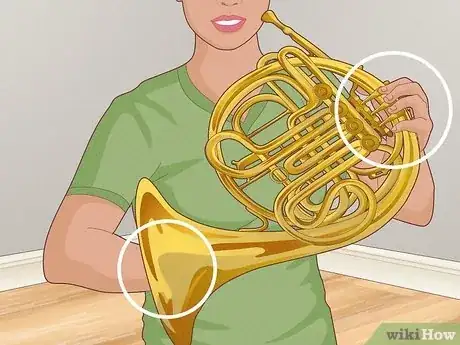
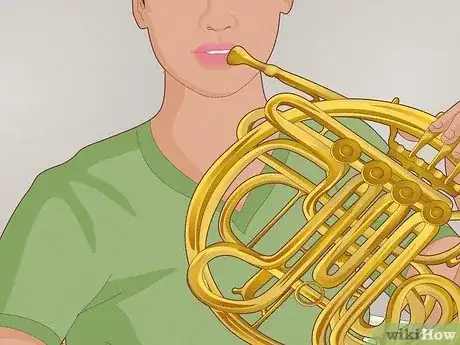
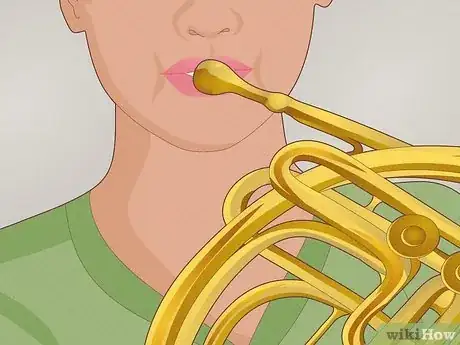
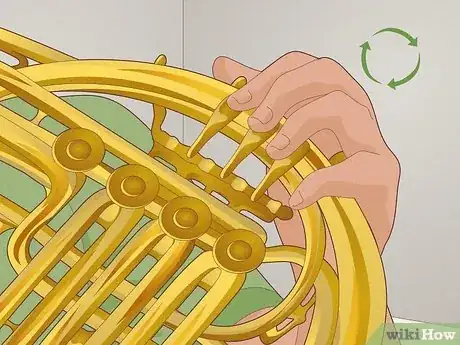
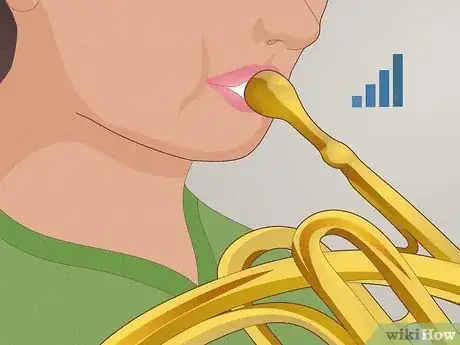
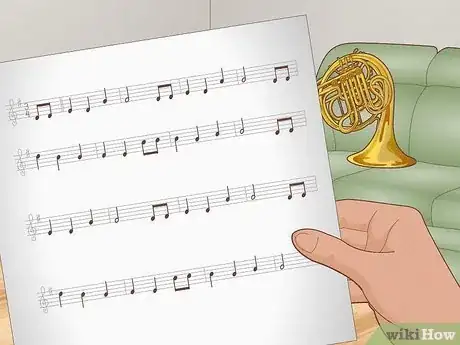
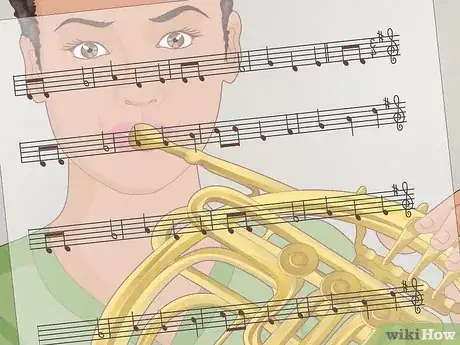
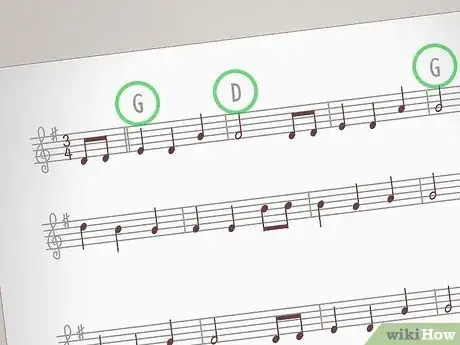
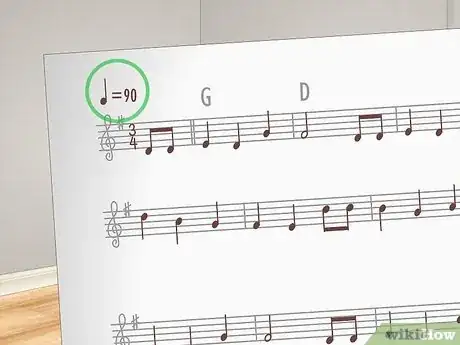

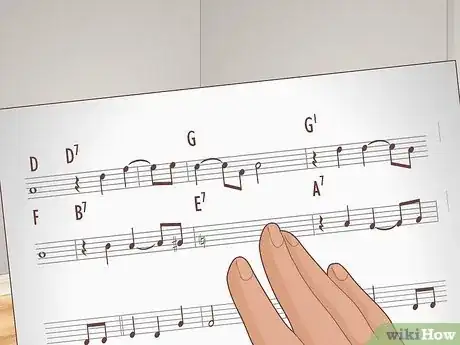
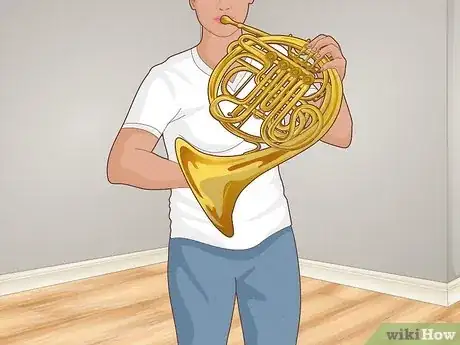
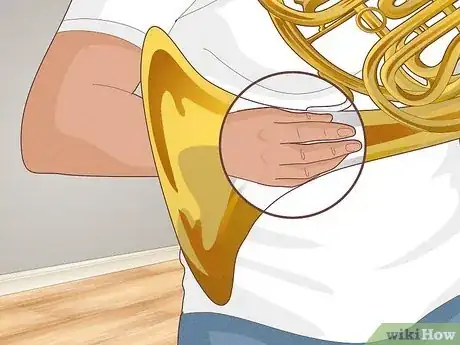
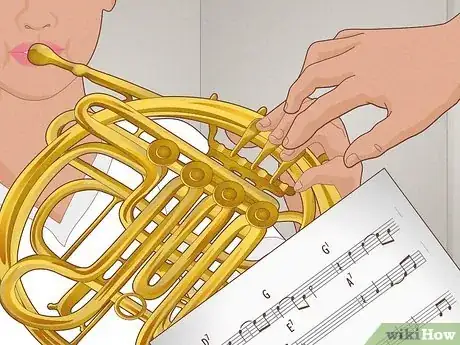
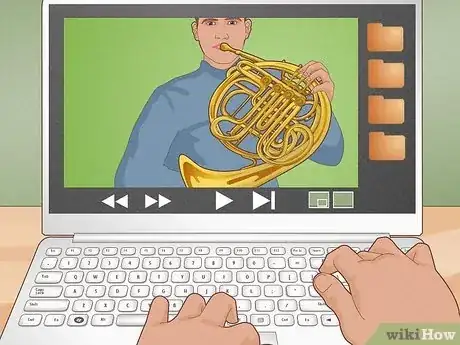


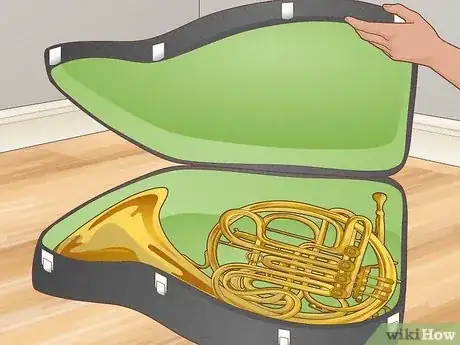
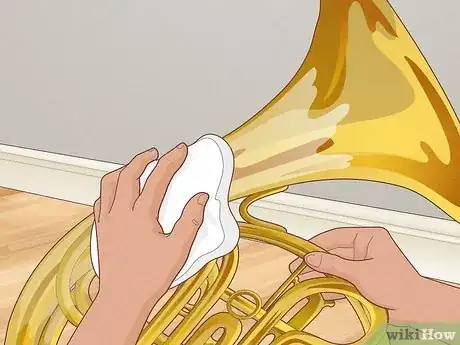
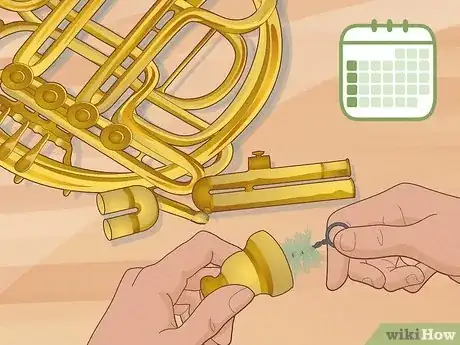
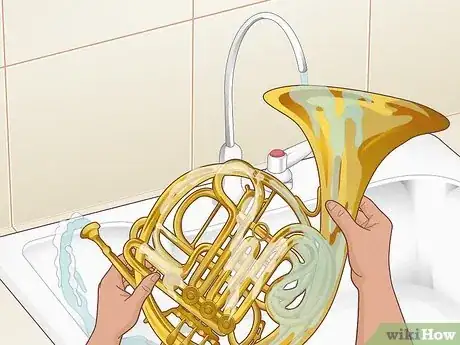
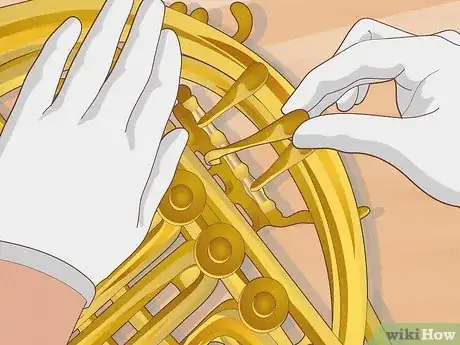
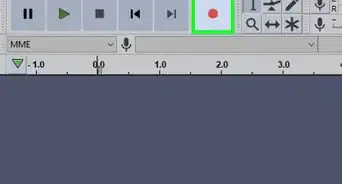





-Step-17-Version-4.webp)

